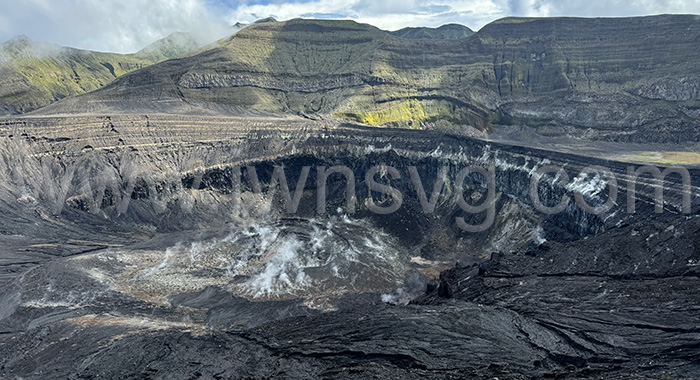There was no evidence on Tuesday of the above-normal temperatures continuing at La Soufriere volcano, two days after it was detected by a NASA satellite.
Prime Minister Ralph Gonsalves said on the state-owned NBC Radio on Wednesday that the Seismic Research Unit in Kingstown had visited the volcano on Tuesday “and there was no visible unusual activity in the crater being observed”.
He said the recommendation at 5 p.m. on Tuesday was that potential hazards associated with the presence of degassing at vents in the crater may still exist for some time as the volcano undergoes periodic fluctuations in background activity.
“Therefore, the public is advised to not venture into the inner crater of the volcano,” the prime minister said.
“The seismic unit here will continue in St Vincent will continue to monitor the physical conditions at the volcano through visual inspection of the summit crater to track ongoing changes, like to see whether there are landslides in the crater, new and or more vigorous fumarolic activity.
“… so that there is, there’s no need for any alarm. You know, we have the volcano there. We have to live with it. What we have to do is to keep the monitoring going. Have our unit in good order, have that kind of a scientific collaboration,” Gonsalves said.
He noted that the government contributes EC$400,000 annually to the upkeep of the UWI Seismic Research Centre, in Trinidad.
He noted that Professor Richard Robertson, a Vincentian geologist based at the UWI Seismic Research Unit had indicated on Tuesday that the above-normal temperature was likely associated with temporal changes at the summit.
Gonsalves noted that Robertson had said that the temporal changes may have included a sulfur fire in the crater, an increase in degassing from fumaroles or a small steam eruption that may have exposed hotter underlying rocks.
“So the long and short of it is that we don’t have to be worried,” Gonsalves said, adding, “We just simply continue to monitor…”
Gonsalves that the Coast Guard regularly sails along the coast and collects gas samples for evaluation as part of the monitoring of the volcano.
He said this is in addition to the monitoring stations across the island.
La Soufriere last erupted explosively in April 2021, following similar eruptions in April 1979 and May 902.
The 2021 explosive eruption was preceded by an effusive eruption that began in December 2020. And the 1979 blast was preceded by an effusive eruption a decade early.
In 2021, the volcano displaced about 20,000 people about one-fifth of the population. It also destroyed or damaged hundreds of homes and other buildings in the volcano red and orange zones and resulted in extensive damage to agriculture and forestry.






